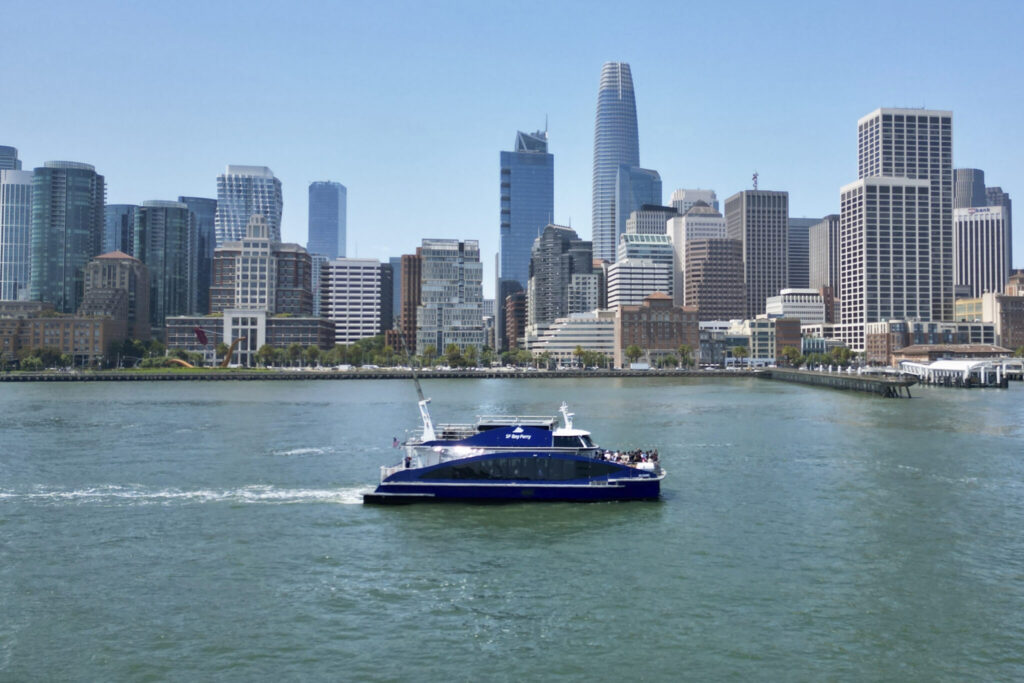The world’s first hydrogen-powered commercial passenger ferry will start operating on San Francisco Bay as part of plans to phase out diesel-powered vessels and reduce planet-warming carbon emissions, California officials said Friday, demonstrating the ship.
Quick Read
- The world’s first hydrogen-powered commercial passenger ferry, the MV Sea Change, will start operating on San Francisco Bay on July 19, offering free rides for six months as part of a pilot program.
- The 70-foot catamaran can transport up to 75 passengers between Pier 41 and the downtown San Francisco ferry terminal.
- The ferry aims to phase out diesel-powered vessels and reduce carbon emissions, showcasing California’s commitment to cleaner transportation options.
- The MV Sea Change can travel approximately 300 nautical miles and operate for 16 hours before needing to refuel, emitting only water as a byproduct from its hydrogen fuel cells.
- Officials highlight the ferry’s potential to help clean up the shipping industry, which contributes nearly 3% of global greenhouse gas emissions.
- The San Francisco Bay Area Water Emergency Transportation Authority sees the successful operation of this ferry as a model for future vessels in the U.S. and globally.
- Hydrogen-powered ferries and ships are seen as crucial in reducing the carbon intensity of ports and the maritime industry.
- The International Maritime Organization aims to halve greenhouse gas emissions from shipping by midcentury.
- While most current hydrogen production uses natural gas, future hydrogen is expected to be produced using renewable energy sources like wind and solar, making it cleaner and less expensive.
- The Sea Change project was funded and managed by SWITCH Maritime and built at Bay Ship and Yacht in Alameda, California, and All-American Marine in Bellingham, Washington.
The Associated Press has the story:
World’s 1st hydrogen-powered commercial ferry to run on San Francisco Bay
Newslooks- SAN FRANCISCO (AP) —
The world’s first hydrogen-powered commercial passenger ferry will start operating on San Francisco Bay as part of plans to phase out diesel-powered vessels and reduce planet-warming carbon emissions, California officials said Friday, demonstrating the ship.
The 70-foot (21-meter) catamaran called the MV Sea Change will transport up to 75 passengers along the waterfront between Pier 41 and the downtown San Francisco ferry terminal starting July 19, officials said. The service will be free for six months while it’s being run as part of a pilot program.
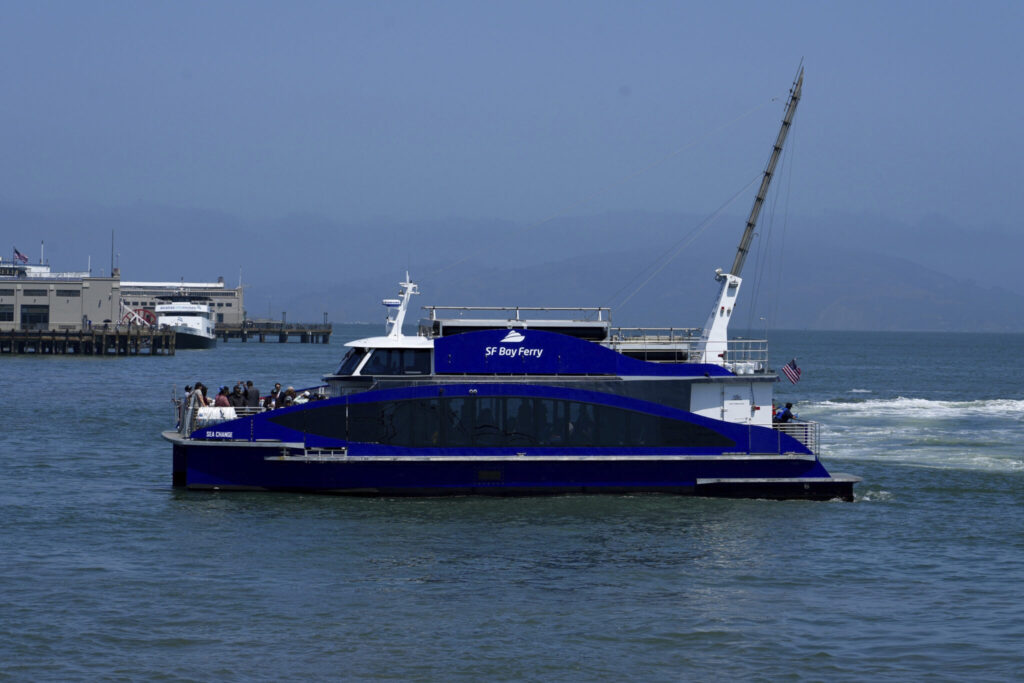
“The implications for this are huge because this isn’t its last stop,” said Jim Wunderman, chair of the San Francisco Bay Area Water Emergency Transportation Authority, which runs commuter ferries across the bay. “If we can operate this successfully, there are going to be more of these vessels in our fleet and in other folks’ fleets in the United States and we think in the world.”
Sea Change can travel about 300 nautical miles and operate for 16 hours before it needs to refuel. The fuel cells produce electricity by combining oxygen and hydrogen in an electrochemical reaction that emits water as a byproduct.
The technology could help clean up the shipping industry, which produces nearly 3% of the world’s total greenhouse gas emissions, officials said. That’s less than from cars, trucks, rail or aviation but still a lot — and it’s rising.
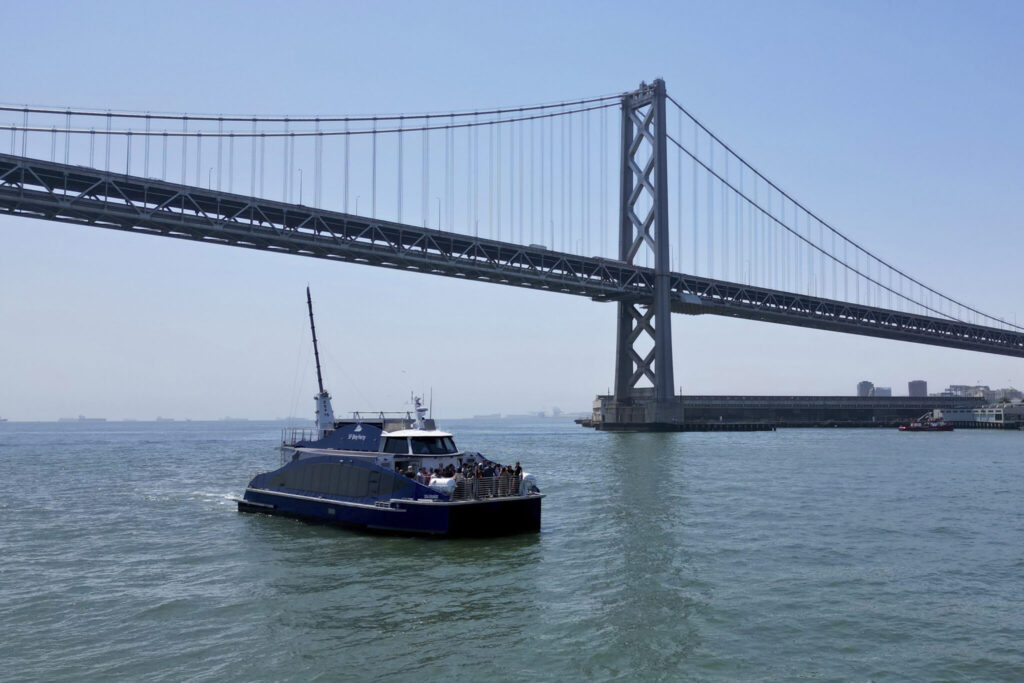
Frank Wolak, president and CEO of the Fuel Cell & Hydrogen Energy Association, said the ferry is meaningful because it’s hard to reduce greenhouse gas emissions from vessels. “The real value of this is when you multiply out by the number of ferries operating around the world,” he said. “There’s great potential here. This is how you can start chipping away at the carbon intensity of your ports.” Backers also hope hydrogen fuel cells could eventually power container ships.
The International Maritime Organization, which regulates commercial shipping, wants to halve its greenhouse gas releases by midcentury. As fossil fuel emissions continue warming Earth’s atmosphere, the Biden administration is turning to hydrogen as an energy source for vehicles, manufacturing and generating electricity. It has been offering $8 billion to entice the nation’s industries, engineers and planners to figure out how to produce and deliver clean hydrogen. Environmental groups say hydrogen presents its own pollution and climate risks.
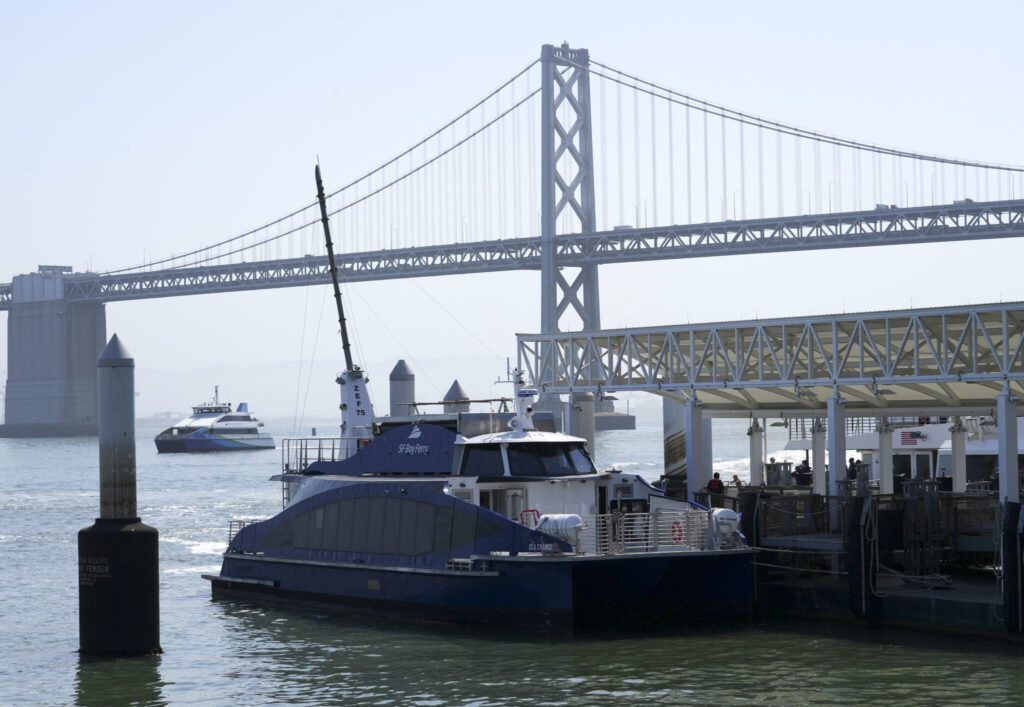
For now, the hydrogen that is produced globally each year, mainly for refineries and fertilizer manufacturing, is made using natural gas. That process warms the planet rather than saving it. Indeed, a new study by researchers from Cornell and Stanford universities found that most hydrogen production emits carbon dioxide, which means that hydrogen-fueled transportation cannot yet be considered clean energy.
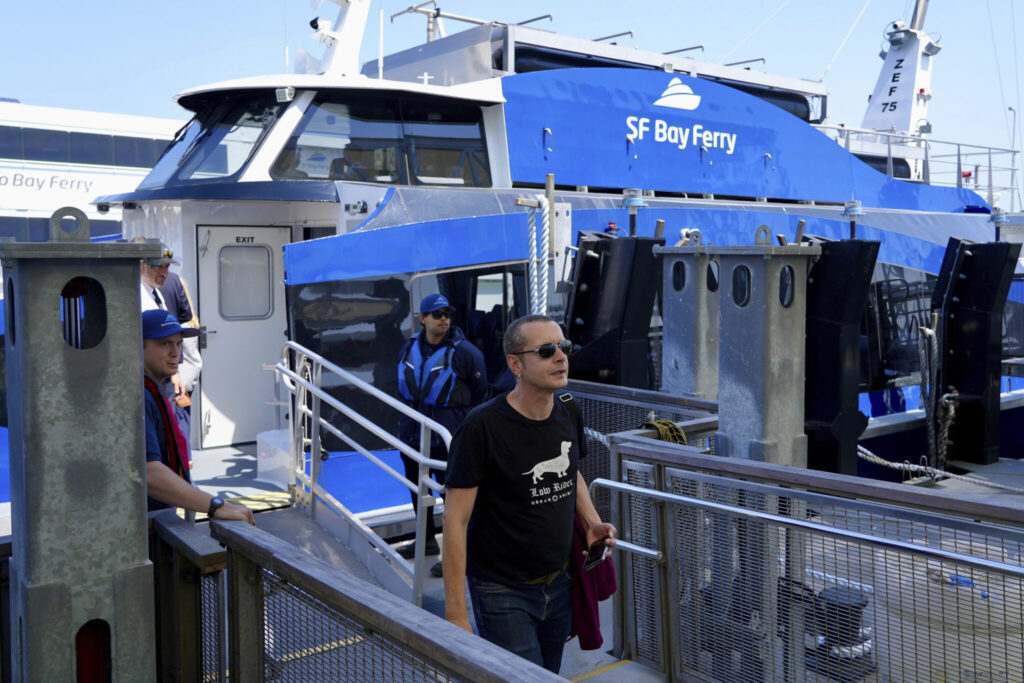
Yet proponents of hydrogen-powered transportation say that in the long run, hydrogen production is destined to become more environmentally safe. They envision a growing use of electricity from wind and solar energy, which can separate hydrogen and oxygen in water. As such renewable forms of energy gain broader use, hydrogen production should become a cleaner and less expensive process.
The Sea Change project was financed and managed by the investment firm SWITCH Maritime. The vessel was constructed at Bay Ship and Yacht in Alameda, California, and All-American Marine in Bellingham, Washington.

